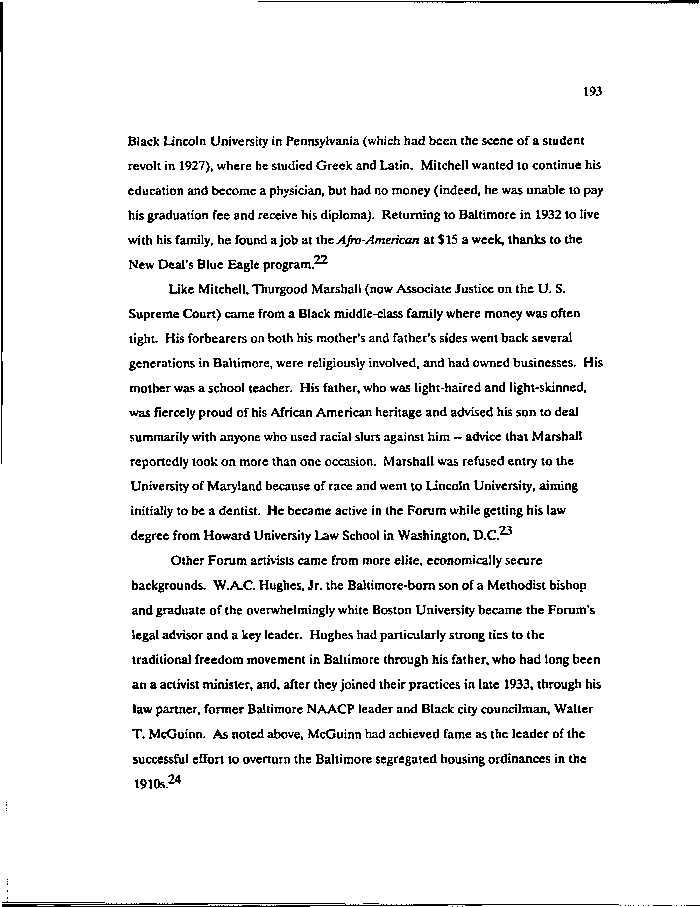|
193
Black Lincoln University in Pennsylvania (which had been the scene of a student
revolt in 1927), where he studied Greek and Latin. Mitchell wanted to continue his
education and become a physician, but had no money (indeed, he was unable to pay
his graduation fee and receive his diploma). Returning to Baltimore in 1932 to live
with his family, he found a job at the Afro-American at $15 a week, thanks to the
New Deal's Blue Eagle program.22
Like Mitchell, Thurgood Marshall (now Associate Justice on the U. S.
Supreme Court) came from a Black middle-class family where money was often
tight. His forbearers on both his mother's and father's sides went back several
generations in Baltimore, were religiously involved, and had owned businesses. His
mother was a school teacher. His father, who was light-haired and light-skinned,
was fiercely proud of his African American heritage and advised his son to deal
summarily with anyone who used racial slurs against him — advice that Marshall
reportedly took on more than one occasion. Marshall was refused entry to the
University of Maryland because of race and went to Lincoln University, aiming
initially to be a dentist. He became active in the Forum while getting his law
o*a
degree from Howard University Law School in Washington, D.C.
Other Forum activists came from more elite, economically secure
backgrounds. W.A.C. Hughes, Jr. the Baltimore-born son of a Methodist bishop
and graduate of the overwhelmingly white Boston University became the Forum's
legal advisor and a key leader. Hughes had particularly strong ties to the
traditional freedom movement in Baltimore through his father, who had long been
an a activist minister, and, after they joined their practices in late 1933, through his
law partner, former Baltimore NAACP leader and Black city councilman, Walter
T. McGuinn. As noted above, McGuinn had achieved fame as the leader of the
successful effort to overturn the Baltimore segregated housing ordinances in the
1910s.24
|

